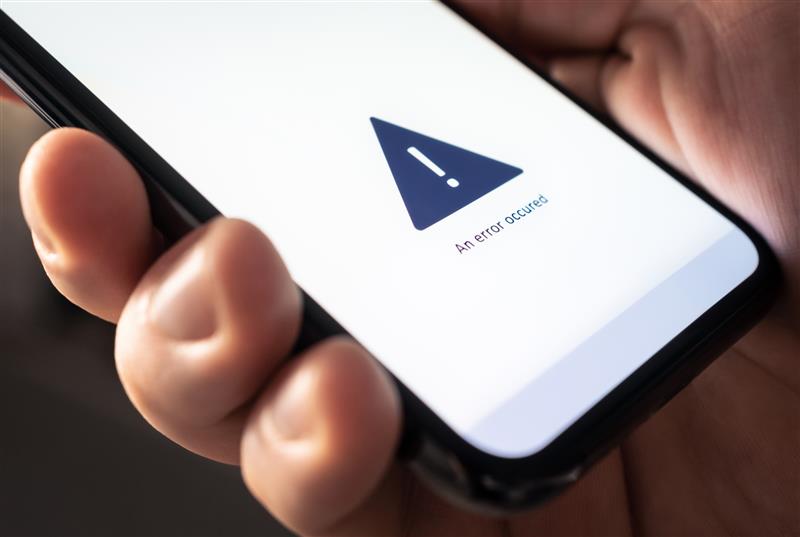




Eric DeGrass
July 21st, 2025
The prevailing IT risk management paradigm, heavily reliant on detective and reactive controls, is no longer tenable in the modern digital ecosystem. A strategic shift from a "fail-and-recover" model to a proactive, preventive framework of operational resilience is not merely a best practice but a financial, competitive, and regulatory necessity.
Recent data paints a stark picture of the financial consequences of failure. The average cost of a single hour of IT downtime now exceeds $300,000 for the vast majority of enterprises, with costs for the largest firms frequently ranging from $1 million to over $5 million per hour. In critical sectors like telecommunications and financial services, this figure stands at a median of $2.2 million per hour for high-impact outages. These figures represent a catastrophic financial hemorrhage, not a line item to be managed. Compounding this risk is the inherent unreliability of reactive controls. Industry data reveals that a staggering 50% of data restores fail, and 60% of backups are incomplete, rendering recovery-centric strategies a high-stakes gamble.
Conversely, the return on investment (ROI) for proactive risk mitigation is clear and compelling. Targeted preventive investments have been shown to yield returns as high as 460% in their first year. The argument for prevention is further solidified by analyzing recent, high-profile outages. Investigations into the nationwide failures at AT&T and Optus reveal a consistent pattern: these were not unavoidable "black swan" events but predictable outcomes of systemic failures in proactive controls, including inadequate testing, flawed change management, and a lack of resilient design.
This operational reality is now being codified into law and regulatory expectations. The European Union’s Digital Operational Resilience Act (DORA) mandates comprehensive risk management and resilience testing. Meanwhile, the UK’s Digital Regulation Cooperation Forum (DRCF) has set a proactive tone through its multi-sectoral approach, including a recent case study on operational resilience across financial services, telecom, and technology. These frameworks are pushing organizations to prove – not just promise – their ability to withstand disruption.
BugZero’s recent white paper, Financial Services in the Crosshairs, further highlights how escalating complexity and platform dependencies have made financial institutions acutely vulnerable to third-party operational bugs. The paper outlines how even non-security-related flaws—bugs in core platforms, API disruptions, or silent logic errors—can trigger cascading service outages and compliance exposure. These operational defects are both under-monitored and under-managed in traditional IT risk practices.
The financial impact of an outage is not uniform across all industries. The cost is most acute in sectors where service availability is directly tied to revenue generation, customer interaction, and regulatory scrutiny – namely telecommunications, financial services, healthcare, and manufacturing.
The 2024 New Relic Observability Forecast identifies these industries among those with the highest median hourly outage costs for high-business-impact events, at $2.2 million. For these industries, an outage translates into lost revenue, SLA penalties, a dent in market confidence, and erosion of customer trust—all of which are foundational to business continuity and long-term viability.
BugZero directly supports the shift toward proactive IT risk management with targeted capabilities that align to each of the principles outlined above:
Proactive Issue Identification Traditional vulnerability scanners miss non-security bugs that can still cause major outages. BugZero continuously aggregates and normalizes data from millions of sources, helping you discover issues in third-party software before they become incidents.
Prevention Over Recovery BugZero helps enterprises avoid incidents altogether by scoring and prioritizing operational bugs based on each organization’s risk framework rather than the vendor’s, enabling teams to remediate issues before they become incidents.
Automated Risk Triage and Scheduling Prevention must be timely to be effective. BugZero integrates directly with ServiceNow to automate triage and remediation workflows – ensuring your teams focus on what matters most.
Regulatory Readiness Regulations are increasingly demanding evidence of proactive resilience, not just reaction. BugZero provides audit-friendly reports, documentation and continuous monitoring to streamline compliance obligations without adding operational overhead.
Efficient Investment in Resilience BugZero surfaces the most critical risks tied to real business impact, helping IT Operations and risk teams prioritize remediation efforts where they’ll deliver the highest return.
To learn more about how BugZero can help your organization meet your organization’s proactive operational requirements, contact us at www.findbugzero.com.
Works cited
Hourly Cost of Downtime - Calyptix Security, accessed July 1, 2025, https://www.calyptix.com/wp-content/uploads/Hourly-Cost-of-Downtime-ITIC.pdf
Outages, Downtime, and Cost | New Relic, accessed July 1, 2025, https://newrelic.com/resources/report/observability-forecast/2024/state-of-observability/outages-downtime-cost
February 22, 2024 AT&T Mobility Network Outage - Federal Communications Commission, accessed July 1, 2025, https://docs.fcc.gov/public/attachments/DOC-404150A1.pdf
Digital Operational Resilience Act (DORA) | Updates, Compliance, Training, accessed July 1, 2025, https://www.digital-operational-resilience-act.com/


Eric DeGrass
October 21st, 2025


Eric DeGrass
September 24th, 2025
Sign up to receive a monthly email with stories and guidance on getting proactive with vendor risk
BugZero requires your corporate email address to provide you with updates and insights about the BugZero solution, Operational Defect Database (ODD), and other IT Operational Resilience matters. As fellow IT people, we hate spam too. We prioritize the security of your personal information and will only reach out only once a month with pertinent and valuable content.
You may unsubscribe from these communications at anytime. For information on how to unsubscribe, as well as our privacy practices and commitment to protecting your privacy, check out our Privacy Policy.


Eric DeGrass
October 16th, 2025